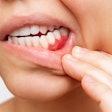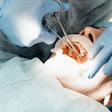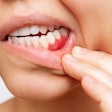Despite guidelines, prescribing antibiotic prophylaxis for dental procedures when treating those at high risk for infective endocarditis remains challenging for dentists. The study was published on January 29 in the International Journal of Dentistry.
For about one-third of dental procedures, dentists at dental schools in the U.S. and Canada could not reach a consensus on which ones warranted antibiotic prophylaxis, the authors wrote.
"Such ambiguity can potentially contribute to inappropriate decision-making regarding the prescription of AP (antibiotic prophylaxis)," wrote the authors, led by Jennifer Bereckis, RDH, MS, of the University of Illinois in Chicago.
The decision to prescribe antibiotics before dental procedures relies on the identification of high-risk patients, as well as those procedures that increase the risk of infective endocarditis.
The 2007 American Heart Association (AHA) guidelines outline prescribing prophylactic antibiotics for individuals with specific medical conditions who are scheduled to undergo dental procedures. The guidelines state that preventive antibiotics are appropriate for high-risk patients for all dental procedures that "involve manipulation of gingival tissue or the periapical region of teeth or perforation of the oral mucosa." However, the guidelines can be left to interpretation, leading to confusion, according to the study.
To assess the consensus among dental faculty on their interpretation of the 2007 AHA guidelines, questionnaires were distributed to accredited dental schools within the U.S. and Canada. The study garnered 130 responses. Of the respondents, 90% were dentists and the other 10% were hygienists and other professionals.
Dentists couldn't reach a consensus on preventive antibiotics for eight of 24 procedures, and they weren't in agreement on gingival manipulation for four out of 24 procedures, the authors wrote.
Furthermore, restorative procedures, including implants and treatment of cervical caries 1 mm above the gingival margin, were ones that dentists couldn't agree produced gingival manipulation or needed antibiotics.
However, the study was not without limitations. Since the sample size included dental school faculty, the findings may not represent all dental providers, the authors wrote.
To ensure clinicians are better aligned with current guidelines, a multifaceted strategy involving enhanced communication, expert consultation, and ongoing training should be completed, they wrote.
"This study on a convenience sample of dental school faculty found a lack of consensus regarding which dental procedures justify the prescription of AP," Bereckis and colleagues wrote.




















